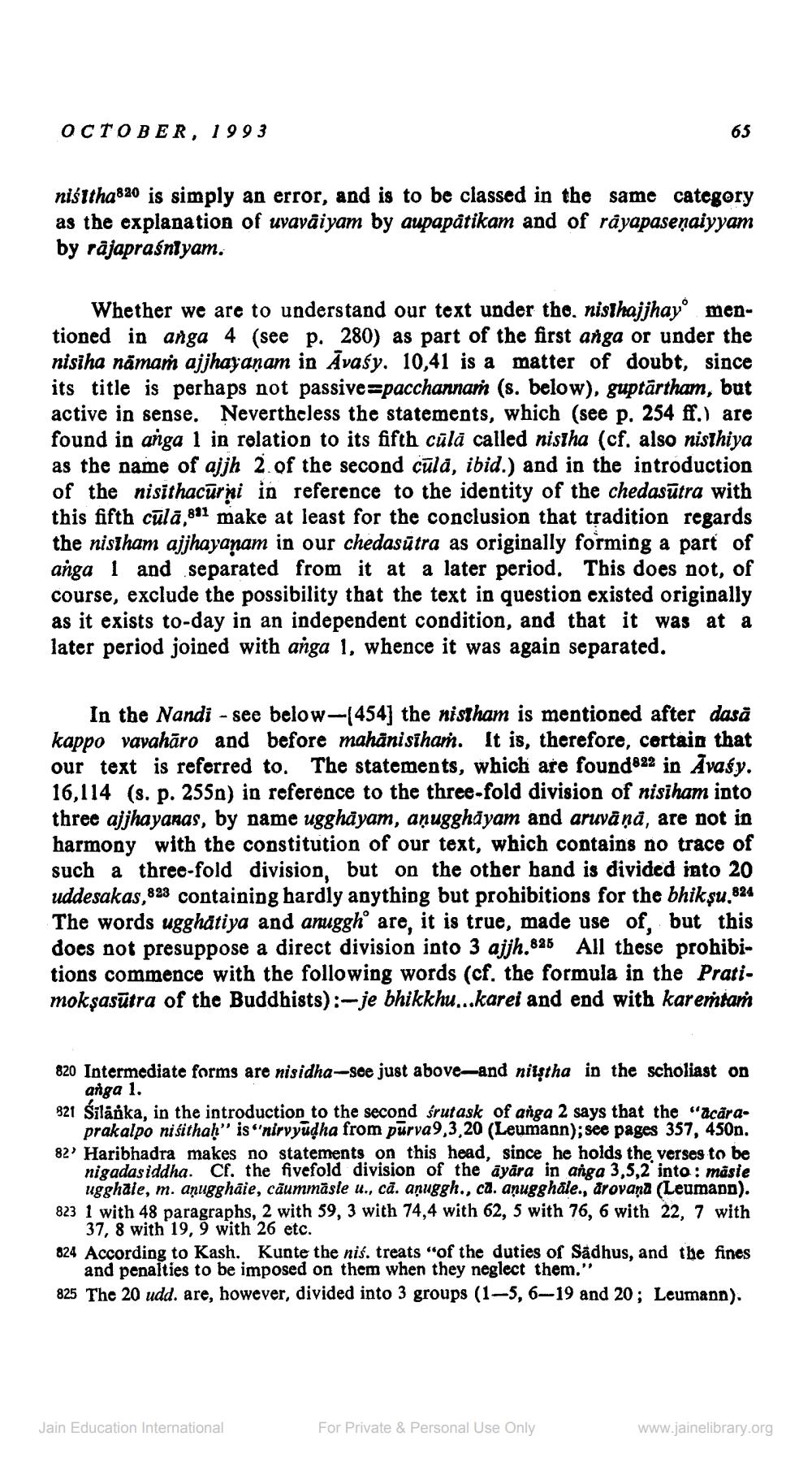________________
OCTOBER1993
niśitha820 is simply an error, and is to be classed in the same category as the explanation of uvavõiyam by aupapåtikam and of råyapaseņaiyyam by rajapraśniyam.
Whether we are to understand our text under the. nisihajjhayo mentioned in anga 4 (see p. 280) as part of the first anga or under the nisiha namaṁ ajjhayaņam in Āvasy. 10,41 is a matter of doubt, since its title is perhaps not passive=pacchannam (s. below), guptārtham, but active in sense. Nevertheless the statements, which (see p. 254 ff.) are found in anga 1 in relation to its fifth culă called nistha (cf. also nisthiya as the name of ajjh 2 of the second cūla, ibid.) and in the introduction of the nisithacūrni in reference to the identity of the chedasūtra with this fifth cūla,8:1 make at least for the conclusion that tradition regards the nistham ajjhayanam in our chedasūtra as originally forming a part of anga 1 and separated from it at a later period. This does not, of course, exclude the possibility that the text in question existed originally as it exists to-day in an independent condition, and that it was at a later period joined with anga 1, whence it was again separated.
In the Nandi - see below-(454] the nistham is mentioned after dasă kappo vavahāro and before mahānisihaṁ. It is, therefore, certain that our text is referred to. The statements, which are found822 in Āvasy. 16,114 (s. p. 255n) in reference to the three-fold division of nisiham into three ajjhayanas, by name ugghayam, anugghāyam and aruvāņă, are not in harmony with the constitution of our text, which contains no trace of such a three-fold division, but on the other hand is divided into 20 uddesakas, 823 containing hardly anything but prohibitions for the bhikṣu.824 The words ugghätiya and anuggho are, it is true, made use of, but this does not presuppose a direct division into 3 ajjh.826 All these prohibitions commence with the following words (cf. the formula in the Pratimokşasūtra of the Buddhists):- je bhikkhu...karei and end with karentan
820 Intermediate forms are nisidha-see just above-and niiştha in the scholiast on
anga 1. 821 Silänka, in the introduction to the second śrutask of anga 2 says that the "acăra
prakalpo niśithah" is nirvyudha from purva 9,3,20 (Leumann); see pages 357, 450n. 82' Haribhadra makes no statements on this head, since he holds the verses to be
nigadasiddha. Cf. the fivefold division of the āyāra in anga 3,5.2 into: masie
ugghaie, m. anugghāie, câummāsle u., ca. anuggh., ca. anugghäle., drovana (Leumapo). 823 1 with 48 paragraphs, 2 with 59, 3 with 74,4 with 62, 5 with 76, 6 with 22, 7 with
37, 8 with 19,9 with 26 etc. 824 According to Kash. Kunte the niś. treats "of the duties of Sadhus, and the fines
and penalties to be imposed on them when they neglect them." 825 The 20 udd. are, however, divided into 3 groups (1-5, 6-19 and 20; Leumann).
Jain Education International
For Private & Personal Use Only
www.jainelibrary.org




